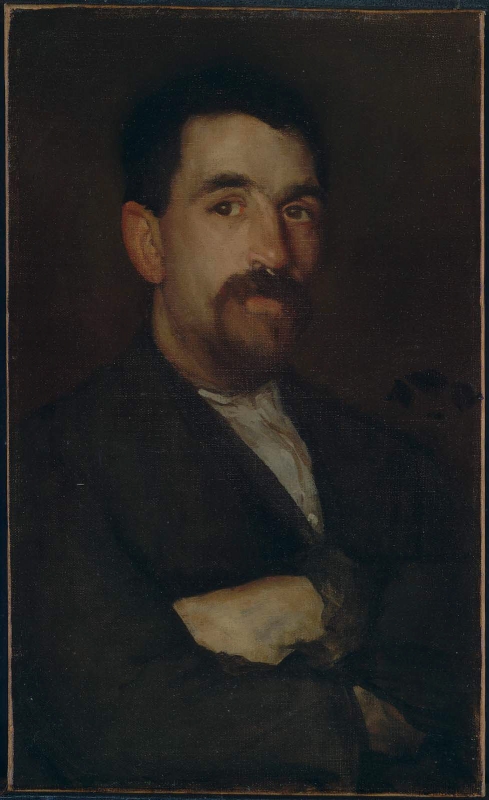The Master Smith of Lyme Regis dates from between September 1895 and 1896. 1
It was started in Lyme Regis, Dorset, between September and October 1895. On 2 November 1895 the art dealer David Croal Thomson (1855-1930), who had just visited Whistler in Lyme Regis, thanked him for having shown him 'The Master Smith':
'The artistic treat of seeing the Royalties of Lyme Regis was one never to be forgotten. The Master Smith, The Rose, The Infanta & the other princess are indelibly impressed on my memory & I cannot too warmly speak of their gorgeous colour, their exquisite style & harmony.' 2
On 6 November 1895 Whistler wrote asking Thomson not to mention the 'Master Smith' to his wife, 'as I want to keep that as a surprise!' 3 According to Thomson, it was 'Painted, in all its preliminary stages,' at Lyme Regis in 1895, but completed back in London at 8 Fitzroy Street. 4
On 6 March 1896 Edward Guthrie Kennedy (1849-1932) of H. Wunderlich & Co., New York, wrote asking Whistler to send him 'a fine "black-smith"' which his brother David A. Kennedy (fl. 1895-1915) had seen in London. 5 Whistler replied, 'Smith - well I think you would like that - but ... it has not been seen here at all!' and later, he wrote, 'Keeping Smith a bit to see if further precious touches - probably between 600 & 800 gs.' 6
Last updated: 4th June 2021 by Margaret






